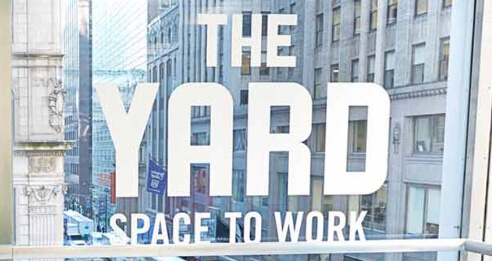
Largest Coworking Companies


In the world of real estate, there is growth in the use of space as a service instead of the traditional philosophies that landlords used. Just like a similar shift in other industries, such as technology and software, landlords are shifting from acting as rent collectors toward becoming service providers. With this change in strategies, landlords and coworking space owners can create a mutually beneficial relationship.

Coworking company owners and landlords can collaborate to offer a range of levels of working. Property owners can harness this teamwork to take advantage of their underutilized spaces by getting the most out of empty spaces of any size, while coworking space owners can design the area and fill them with amenities to make a profit. The coworking companies get to develop a brand, while the landlords bring value to their buildings, and both sides make a profit. The coworking space can set up the space so each member chooses their level of working they prefer, whether it is 24/7 or just during business hours.
The collaboration between coworking space owners and landlords also comes into play when dealing with flex spaces. Many experts in the industry see flex spaces as the future, with most real estate transactions including some sort of flexibility at some point. While there will still be plenty with traditional leases that last 10 to 15 years, there will be a growth in offerings for those who do not want such long leases. This will be in the form of a managed suite where coworking space owners and others can build out based on a price per square foot but not have to deal with details like utilities and other inconveniences. In this way, buildings will be able to adapt to the changing needs of coworking spaces to always use their space, while coworking spaces get the flexibility they need.
The teamwork also plays a role in levels of membership. With a range of membership levels, a coworking company can be almost recession-proof. This also benefits the landlord, as they can count on steady rent from the coworking company, even in a recession. If the space is large and can accommodate varying requirements of members, it creates a mutually beneficial relationship between the landlord, the tenant, and the member. At the same time, different levels of membership allow for company growth, helping landlords retain coworking spaces. The two parties will work together to iron out important details, such as licensing.

WeWork is a classic example of a coworking space, offering plenty of flexibility. However, WeWork somewhat fits into the traditional real estate model since it begins with a sizable space of about 25,000 to 40,000 square feet.
To see the newer space as a service idea in action with teamwork between the landlord and the shared space owner, look at Bold. Bold focuses on smaller spaces between 5,000 and 15,000 square feet. Bold acts as the tenant, renting these oddly sized offices from the landlords, who benefit from being able to utilize all their space or want to dip their toes into the idea of flex spaces.
Save your community manager 41 hours each week—learn how The Yard did it with cloud-based access control.
Read the Case StudyThe Guide to Make Your Space More Profitable
Including interviews with experts and consultants.
Free access to our best guides, industry insights and more.
